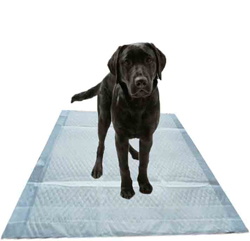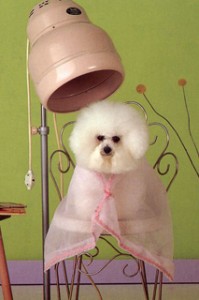 If you’ve ever experienced the ordeal of house training your dog, pet training pads have to be part of your training tools. These are absorbent pads that are chemically treated to entice puppies and dogs to use them instead of peeing on the floor. They are an excellent alternative to using newspaper because they absorb the liquid, and the waterproof backs on the pads protect your floor from unwanted moisture and odor. They are even treated to entice your dog to use them.
If you’ve ever experienced the ordeal of house training your dog, pet training pads have to be part of your training tools. These are absorbent pads that are chemically treated to entice puppies and dogs to use them instead of peeing on the floor. They are an excellent alternative to using newspaper because they absorb the liquid, and the waterproof backs on the pads protect your floor from unwanted moisture and odor. They are even treated to entice your dog to use them.
Pet Training Pads Get Even Better
Believe it or not, there are ways to improve on this innovative dog house training tool. For those who are a little squeamish about the idea of adding to a landfill by tossing the training pad every time their dog urinates, there are washable reusable pet training pads. These are much like the pads used in hospitals or sold at medical supply stores for patients suffering from incontinence. They are made from layers of absorbent cloth with a water resistant back, so these pee pads are just as effective as their disposable counterparts.
The difference is that these pads can be washed and used again and again In fact; they are designed to continue to work effectively for up to 300 washings. Purchase a few of these in the appropriate size for your dog, and rotate them so that you always have one or two clean. In fact, you can even purchase pads that have attractive designs, like paw prints or plaids, or you may choose to purchase solid colors. This is a nice feature since pee pads will become a part of your general decor during your dog house training time.
Play it Safe with a Pee Pad Holder
Pee pads are great at keeping the wetness of the floor, but sometimes your puppy gets too close to the edge, and the moisture may leak off or get trapped beneath the pad. A pee pad holder will stop this from occurring. This is a flat pan that comes in a variety of sizes to go with whatever pet training pads you buy. You secure the pad to the pan and around the outside lip of the holder. If your puppy gets too close to the edge, the urine will flow back into the pan, and there is no risk of the wetness getting caught between the floor and the fabric.
Choose the Right Pet Training Pads for Your Dog
A pee pad holder comes in different sizes because the pads come in different sizes. Obviously, a mastiff puppy will need a larger pad than a Chihuahua will, so there are small, medium, large, and extra-large pads. Be sure to choose the pad that is right for your dog, and you will have a better chance for success. It is because of these intuitive enhancements and options that these pads are such useful tools. You and your dog will experience far less stress as you go through this training period with the help of these innovative pee pads.
